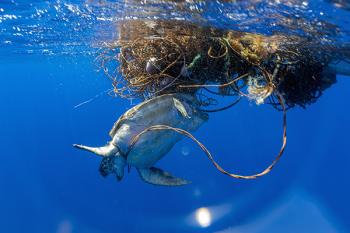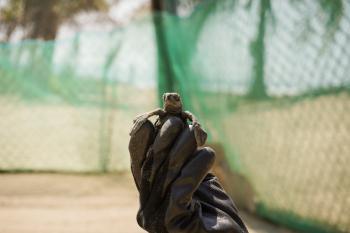One of the most popular and most photographed exhibits at the Monterey Bay Aquarium is the beautiful mesmerizing ballet of sea nettles. The Pacific sea nettle, Chrysaora fuscescens, lives in coastal waters from Alaska to California, to Japan, Kamchatka, the Aleutian Islands, and the Bering Sea. With their long, trailing tentacles these jellies are large: their bells are about 17.7 inches (45 cm) in diameter, mouth-arms from 12 to 15 feet (3.6 to 4.6 m) long. The frilly mouth-arms and tentacles are covered with stinging cells, called nematocysts.
Although these jellies are little more than a sack of water without a brain, they are efficient predators. With their pulsing bells, they slowly cruise creating currents that bring food to the trailing tentacles. When a tentacle encounters prey, the stinging cells catch and paralyze it. Then the tentacle contracts and passes the prey to the mouth-arms and finally to the mouth, where it's digested.
The sea nettles’ life cycle is complex. They have high rates of growth and reproduction and sometimes there can be millions in one area appearing suddenly in “blooms.”
Worldwide, there are 15 species of sea nettles. In some areas, it is the most abundant jelly, preying on copepods, other small crustaceans, anchovy and other fish eggs. Adult sea nettles have few predators other than sunfish and sea turtles, so when there are blooms, they have a big impact on ecosystems.
Read more about the sea nettle:
Watch sea nettles at the Monterey Bay Aquarium















